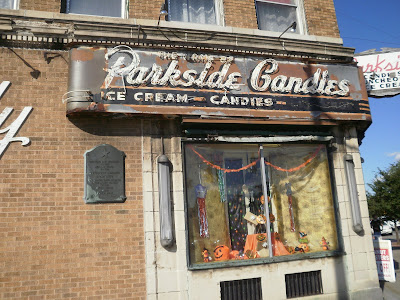 In the United States a company called Landmark is setting the standard for water tank design. First composite elevated tanks provide more than 75 percent of water from elevated sources. But their tanks are very good because they provide a 15-20% cost advantage in maintenance and can hold up to 3.5 million gallons of water. The concrete pedestal is maintenance free and its concrete dome supports the steel tank floor, eliminating condensation and the need for protective ceilings. Inside the pedestal the tank can have several floors of office space and house fire emergency stations with truck bays and water pumping stations. Outside, the tank can have custom graphics and be a source of lighting for the community. So this water tower can service as a lighthouse, landmark, fire station, and office building in one, thats multi-tasking!
In the United States a company called Landmark is setting the standard for water tank design. First composite elevated tanks provide more than 75 percent of water from elevated sources. But their tanks are very good because they provide a 15-20% cost advantage in maintenance and can hold up to 3.5 million gallons of water. The concrete pedestal is maintenance free and its concrete dome supports the steel tank floor, eliminating condensation and the need for protective ceilings. Inside the pedestal the tank can have several floors of office space and house fire emergency stations with truck bays and water pumping stations. Outside, the tank can have custom graphics and be a source of lighting for the community. So this water tower can service as a lighthouse, landmark, fire station, and office building in one, thats multi-tasking!Addison, a environmental company in Texas is creating one of the first water towers to be completely powered by wind and serve as a piece of art. The wind turbines on top will provide enough energy to run the tower and the street lights below! At the base there will be a classroom where people can learn about wind power and water distribution. These are a few ways in the United States innovation is being used to create effective uses for water towers.
Water towers are also being used as homes. Some of the older water towers built are being cleared out inside and being transformed into luxury houses. It is like having a whole condo for yourself (if you can afford it!). These water tower homes provide a new twist on living green because there is no need for land clearing and demolition, land filling, or need for structural materials. The high glass ceilings are natural for thermal heating.
 Internationally water tank innovation is changing the lives of many people. In Darfur, Sudan the water tower skyscraper design by Polish architect design firm H3AR is creating a multipurpose building to pump water from a underground region of Sudan. What is so amazing about the structure is how important it will be in the lives of the people in the region. It will serve as a treatment plant for water, hospital, school, and a food storage center. This structure is being built compressed dry clay bricks, with a mixture of cement and earth to reduce environmental impacts. It uses two water circulation processes, one to heat and cool the building and the other for kitchens and toilets.
Internationally water tank innovation is changing the lives of many people. In Darfur, Sudan the water tower skyscraper design by Polish architect design firm H3AR is creating a multipurpose building to pump water from a underground region of Sudan. What is so amazing about the structure is how important it will be in the lives of the people in the region. It will serve as a treatment plant for water, hospital, school, and a food storage center. This structure is being built compressed dry clay bricks, with a mixture of cement and earth to reduce environmental impacts. It uses two water circulation processes, one to heat and cool the building and the other for kitchens and toilets. Finally, Castle in the Sky, a water tower concept for Latina, Italy takes innovation to ANOTHER LEVEL! It includes a public garden space, a sky deck, and a device that vaporizes the tower's water and creates rain! Yes, THE TOWER LITERALLY MAKES IT RAIN! The tower sits on a reservoir of incoming water and the shaft of the tower is coated in reflective material to make it appear as if it's disappearing as it rises in the sky! The top can be reached by an elevator, and the sky deck is used for festivities or just a view of the city. Water is pumped up to keep the plants above watered and moisture around the tower keeps the gardens below with enough precipitation.
Finally, Castle in the Sky, a water tower concept for Latina, Italy takes innovation to ANOTHER LEVEL! It includes a public garden space, a sky deck, and a device that vaporizes the tower's water and creates rain! Yes, THE TOWER LITERALLY MAKES IT RAIN! The tower sits on a reservoir of incoming water and the shaft of the tower is coated in reflective material to make it appear as if it's disappearing as it rises in the sky! The top can be reached by an elevator, and the sky deck is used for festivities or just a view of the city. Water is pumped up to keep the plants above watered and moisture around the tower keeps the gardens below with enough precipitation. Talk about innovation! Who would have guessed something thought to be somewhat useless could be so useful and in so many ways.








